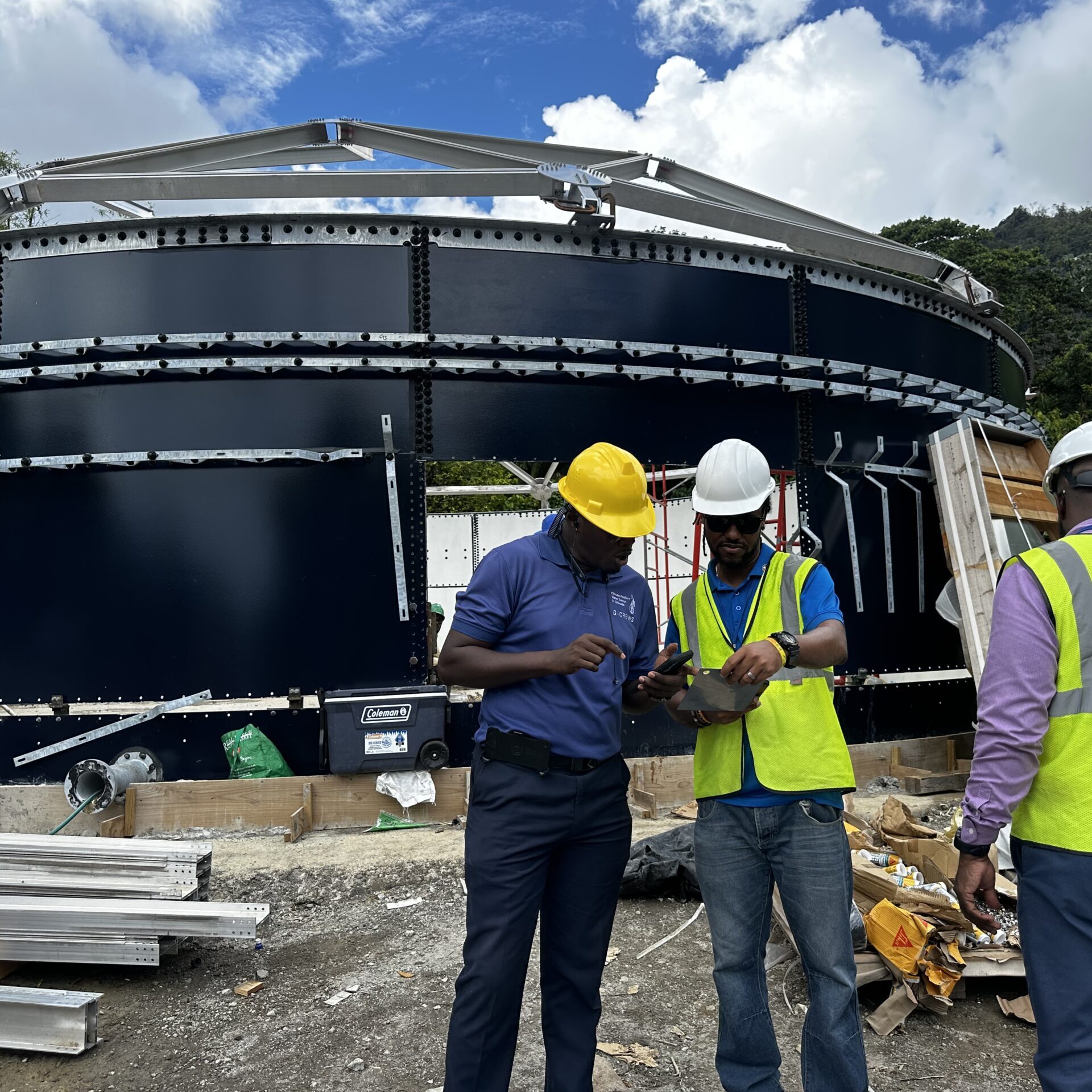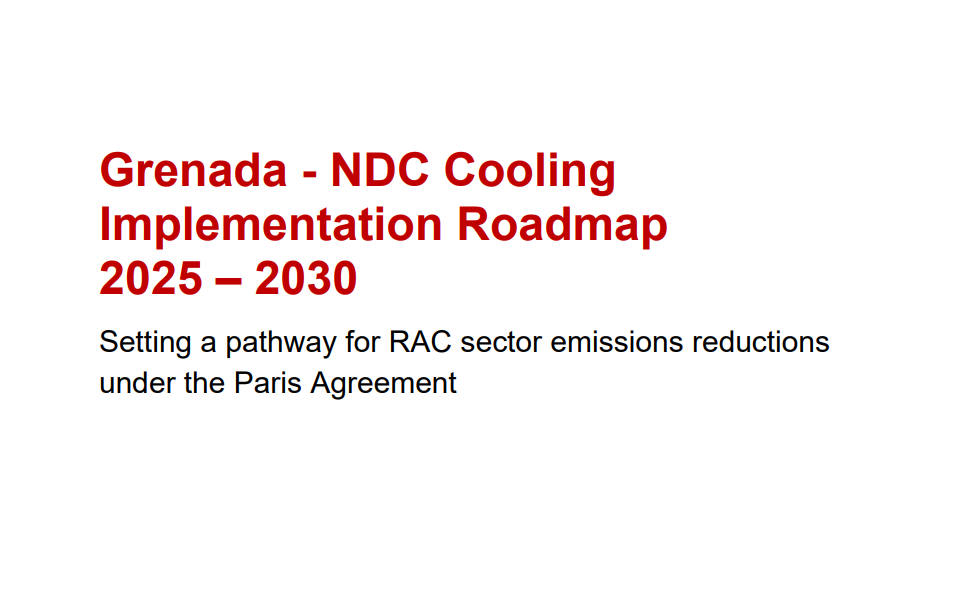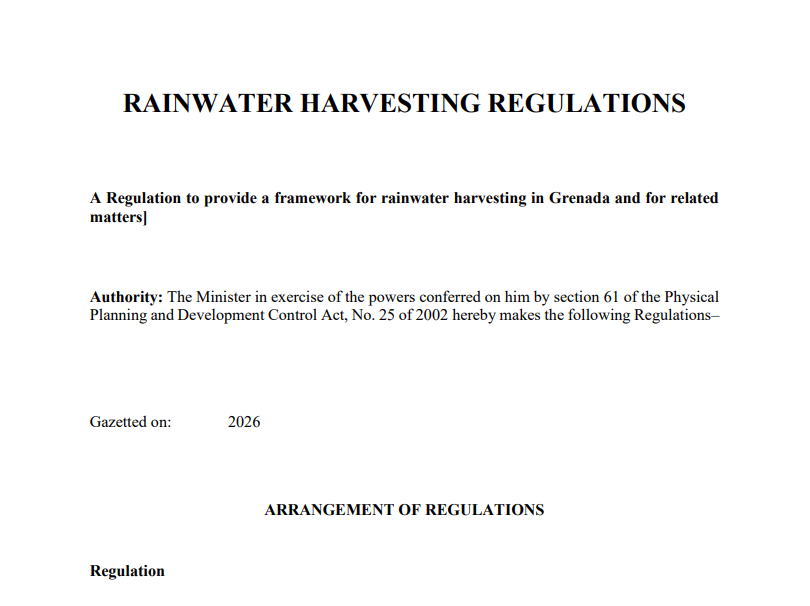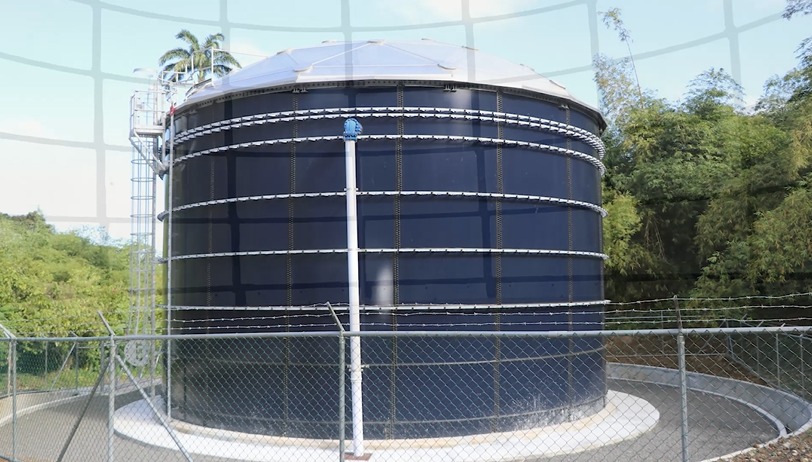Resilient Infrastructure and Sustainable Land Management

Challenges and Opportunities
Grenada’s geographic position and environmental conditions make it highly vulnerable to climate change-related hazards such as flooding, coastal erosion, and landslides. These impacts pose significant threats to critical infrastructure and land resources, making resilient infrastructure and sustainable land management key priorities.
Challenges
Grenada faces significant risks from natural and climate-related hazards, including:
- Coastal Erosion and Flooding: These phenomena particularly threaten transport infrastructure, such as roads and bridges, which are essential for connectivity and economic activity. Principal road corridors along coastal areas, the international airport and the commercial port are especially vulnerable.
- Landslides and Land Degradation: Unsustainable land use, deforestation, and inappropriate agricultural practices have increased the likelihood of landslides, particularly in hilly regions, exacerbating soil erosion and further destabilizing infrastructure.
- Limited Land Resources: Grenada’s steep topography, inefficient land tenure system, high rainfall levels, and unregulated land use contribute to land scarcity. Growing demands for land, coupled with illegal construction and squatting, undermine sustainable land management.
- Rising Sea Levels: Coastal infrastructure, including tourism developments and essential services, faces long-term risks from sea-level rise, leading to increased investment in protective measures.
Opportunities
Despite these challenges, Grenada has opportunities to build resilience:
- Investment in Climate-Resilient Infrastructure: Grenada can focus on upgrading critical infrastructure, such as roads, bridges, and water management systems (see Water Availability), to withstand climate impacts. The Grenada Resilience Improvement Project (GRIP) and other initiatives are driving this progress, particularly in road and coastal protection infrastructure.
- Sustainable Land Management: Strengthening the legal and policy framework for land management presents opportunities to curb unsustainable practices and improve soil health, reduce erosion, and protect biodiversity.
- Financial Resilience: Developing mechanisms for financial resilience, including disaster insurance and climate financing, can help Grenada sustain investments in resilient infrastructure.
- Integrating Gender and Social Factors: With its Gender Equality Policy, Grenada adopts a 360-degree approach, incorporating social, gender, and environmental dimensions into resilient infrastructure and land management strategies.
Sector's Governance
Governance in Grenada’s resilient infrastructure and sustainable land management sector involves multiple agencies and international collaborations, each playing a specific role in climate resilience:
- Ministry of Climate Resilience, Environment, Forestry, Fisheries, and Disaster Management: This ministry leads initiatives to integrate climate resilience into infrastructure projects and land use practices.
- Ministry of Infrastructure Development, Public Utilities, Energy, Transport, and Implementation: Responsible for the development and maintenance of infrastructure, including roads, utilities, and public buildings, this ministry is key to advancing resilient construction standards.
- National Disaster Management Agency (NaDMA): Focuses on disaster preparedness and recovery, ensuring that critical infrastructure and land-use policies account for disaster risks.
- Physical Planning and Development Authority: Enforces the Physical Planning Act and regulates land use to mitigate environmental risks and promote sustainable development.
- Canada-Caribbean Resilience Facility (CRF): Supports infrastructure resilience investments through regional initiatives.
These agencies are supported by international development partners, including the World Bank and the European Union, in implementing projects such as the Regional Disaster Vulnerability Reduction Project (RDVRP) and the Caribbean Regional Resilience Building Facility (CRRBF).
Policy Framework
Grenada has developed several policies and plans to promote resilient infrastructure and sustainable land management:
- National Land Policy: This policy addresses the sound management of land and natural resources, focusing on reducing land degradation and unsustainable practices like squatting and ad hoc urban development. It emphasizes the importance of sustainable land management for economic growth, food security, and climate resilience.
- National Adaptation Plan (NAP): The NAP outlines strategic actions to build climate resilience, including specific programs aimed at improving infrastructure resilience and sustainable land use.
- Physical Planning Act (2016) and Building Code Regulations: These establish the legal framework for land development, ensuring that new infrastructure projects comply with standards for climate resilience and disaster risk reduction.
- Integrated Coastal Zone Management Policy (2015): Focuses on the sustainable use of coastal areas, mitigating risks from rising sea levels and coastal erosion.
Additionally, Grenada is finalizing a comprehensive Natural Resources Management Bill with support from international partners, which will further strengthen the legal framework for sustainable land management.
Regional and International Agreements
Grenada benefits from several regional and international agreements that promote climate resilience and sustainable land management:
- Canada-Caribbean Resilience Facility (CRF): Focuses on ensuring that infrastructure investments are resilient to climate change across the Caribbean, aligning with the World Bank’s RDVRP.
- EU-funded Caribbean Regional Resilience Building Facility (CRRBF): Supports climate resilience initiatives, helping countries like Grenada implement resilient infrastructure and sustainable land management strategies.
- Grenada Resilience Improvement Project (GRIP): Financed by the World Bank, GRIP focuses on improving road infrastructure and protecting coastal areas from climate impacts.
- Global Environment Facility (GEF): Funds the Climate-Resilient Agriculture for Integrated Landscape Management project in Grenada, promoting sustainable land use and resilience in the agricultural sector.
These agreements contribute to Grenada’s efforts to enhance infrastructure resilience and sustainable land management, particularly by providing financial and technical support for climate adaptation initiatives.
Current Status of Infrastructure Resilience and Sustainable Land Management in Grenada
Infrastructure Resilience
Grenada’s infrastructure, particularly its road and transport network, remains vulnerable to extreme weather events. Recent efforts through projects such as GRIP have focused on strengthening road corridors and coastal protection measures. However, further investment is needed to upgrade aging infrastructure to meet climate resilience standards. Grenada’s transition to renewable energy, primarily through solar and wind power, is also enhancing the resilience of its energy sector (see Energy).
Sustainable Land Management
Grenada has made strides in improving land management through the enactment of the National Land Policy and the Physical Planning Act. However, challenges such as illegal construction, unregulated land use, and competition for limited land resources continue to threaten sustainable practices. The government is working to implement the Integrated Coastal Zone Management Policy and other initiatives aimed at mitigating land degradation and promoting reforestation. Additionally, the finalization of the Natural Resources Management Bill is expected to further strengthen the legal framework for sustainable land use.
In conclusion, Grenada has made significant progress in building resilient infrastructure and promoting sustainable land management practices. However, challenges related to land use, infrastructure vulnerability, and climate change impacts remain. Continued investments in resilience, supported by strong governance and regional partnerships, will be essential for ensuring sustainable development in the face of climate change.







